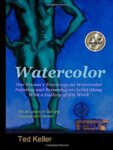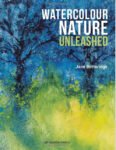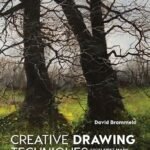I thought I'd treat myself to an art book after going through a lot this…

Watercolor Techniques, Michael Reardon: Book Review
Before I get on to reviewing this book, a quick plug for the Camel Camel Camel website. For all the books and CDs that I put in my Amazon wishlists, I set up an alarm on Camel Camel Camel to tell me when the price falls below my target price. It’s why my book reviews tend to start with a statement saying that I bought the book because it was going cheap on Amazon. Everybody should use Camel Camel Camel. It even shows graphs like the one below, which tells you at a glance why I finally bought this book.

But, anyway, on to Michael Reardon’s book. It’s a 144 page hardback and there’s something about the way that most of the pages have a 5mm thin mauve border around them that oozes class. It is, as the subtitle on the cover suggests, all about painting landscapes and cityscapes in a way that makes the light the star. But is it any good?
There are nine chapters. On the face of it they’re on the usual subjects like gear, basic techniques, perspective, values, light, colour, whatever but this didn’t feel like a structured book. Maybe it’s because the first eight chapters all had a demonstration at the back and that (i) a lot of what I took away from the book was from the demonstrations rather than everything in between, and (ii) the demonstrations weren’t fitted to the chapters. What do I mean by not fitted to the chapters? Well, there were eight demos and they really could have been included in any order. There wasn’t a colour focussed demo in the colour chapter, a values focused one in the values chapter, etc. And I found it quite bizarre that Michael included a demo at the end of the chapter on equipment before he’d told us anything about painting.
The stuff between the demos is interesting enough, and includes some tips that I’d not seen before but I found it to be a fast read and didn’t learn that much (and that wasn’t because I was reading too quickly). It actually turns out to be the demos where most of the value in this book lies. And, even then, this is a book for experienced artists who can look at what an artist is doing and learn from it, rather than listening to what an artist is saying as he does it and taking notes. Because you need to look at the pictures to really understand the process. Do this and you’ll really be inspired by Michael’s style and want to try something similar.
Michael’s style is all about creating atmosphere and light in his paintings, which he does with his underpaintings (which you learn about via the demos, not the text). He likes to create the picture using carefully planned values, while setting the mood with his choice of colours, something I obviously approve of. And he has a thing about blues and oranges for painting buildings – those two colours dominate his paintings and leave me seriously wondering whether and how I should incorporate a tube of transparent orange into my watercolour palette. Yellow and purple would work too. If this sounds like a style you’d be interested in, then this book might be for you.
Overall, I found this book to be a quick read and short of lessons but my head’s buzzing right now because this one is big on inspiration. I’m wanting to copy/mimic Michael’s style and see what the results are like. I’ve picked this one up in bookshops a few times, looked through and put it back on the shelves, probably because I was looking at the text and trying to gauge how content rich it was. But it’s not until you actually buy it and read it through properly that you realise the value is in those demos and that you need to be quite experienced to be able to access that value, that you realise that this is actually a really good book. I’ve not mentioned whether the artwork in the book is inspirational. Obviously it is, but the demos make it possible to aspire to create similar paintings, not something I could say for every book in my collection. I’m giving Michael four palettes.
I think I learned more bout painting buildings from this book than I did from Nicholas Poullis or from Richard Taylor. Catherine Beale still leads the way on light and atmosphere books for building-free landscapes though.
🎨🎨🎨🎨
You can find this book and more reviews of it at Amazon UK here. As an Amazon Associate, I earn commission from qualifying purchases but this costs absolutely nothing extra to you.








Leave a Reply